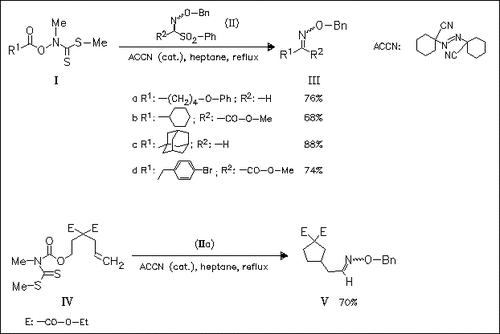ChemInform Abstract: Decarboxylative Acylation Approach of Thiohydroxamate Esters.
Abstract
ChemInform is a weekly Abstracting Service, delivering concise information at a glance that was extracted from about 100 leading journals. To access a ChemInform Abstract of an article which was published elsewhere, please select a “Full Text” option. The original article is trackable via the “References” option.
ChemInform Abstract
A decarboxylative acylation approach is achieved with thiohydroxamate esters (I), which are less reactive and more stable than the corresponding Barton′s esters.





